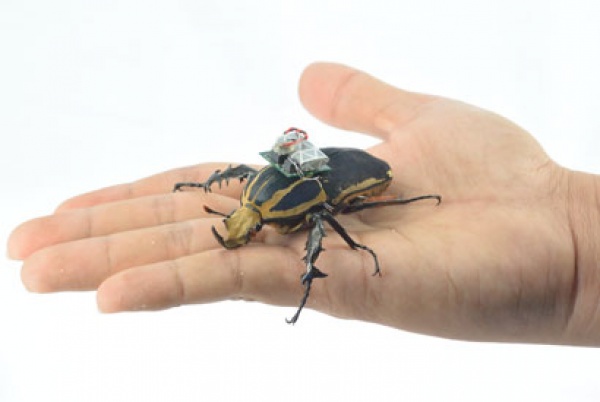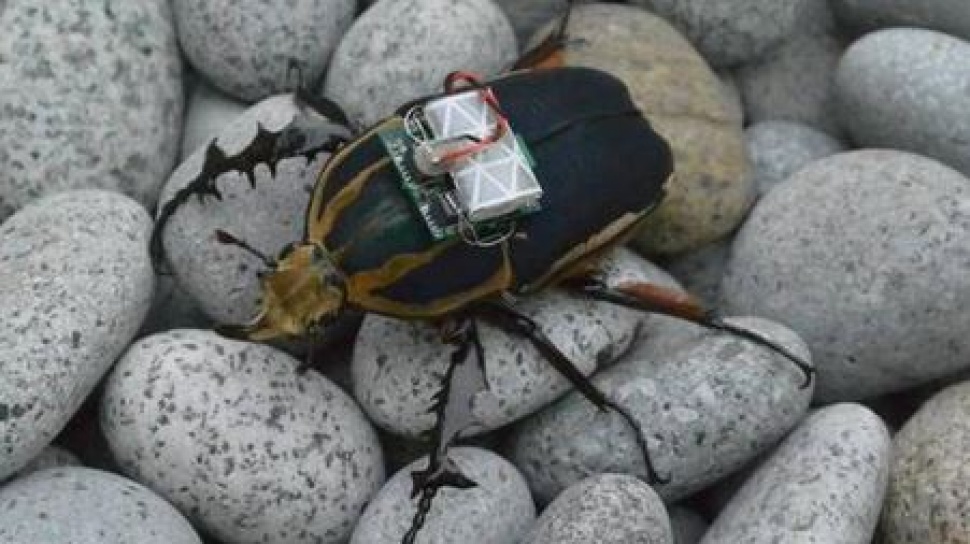Scientists, for the first time, have managed to control live insects in the same manner in which drones are controlled. Thanks to the radio transmitter and mini electronic "backpack" that are attached to the insect, movements of insects can be controlled with the help of controller.
If this invention is going to be perfected, in the future we will be able to explore inaccessible regions with the help of small controlled insects.
"Beetles are ideal for these projects, because they can carry heavy objects on their back. We can also add small microphones and thermal sensors for rescue operations and research. With this technology we can reach parts of the planet that were previously inaccessible," said study lead author Hirotaka Sato, an assistant professor at NTU’s School of Mechanical and Aerospace Engineering.
 To show how the muscle steers, the researchers fitted a giant flower beetle, just over two inches long, with a microcontroller and a wireless receiver and transmitter weighing as much as a paperclip (the bugs can carry 20 percent of their weight, so the cargo wasn’t a problem). Electrodes fire pulses into the beetle’s muscles - zap the steering muscles with more frequent electrical pulses, and they contract more, turning the wing harder. About 25 seconds into the video, you can see how an increase in pulse frequency, from 70 to 90 times a second, forces the beetle into a tighter turn.
To show how the muscle steers, the researchers fitted a giant flower beetle, just over two inches long, with a microcontroller and a wireless receiver and transmitter weighing as much as a paperclip (the bugs can carry 20 percent of their weight, so the cargo wasn’t a problem). Electrodes fire pulses into the beetle’s muscles - zap the steering muscles with more frequent electrical pulses, and they contract more, turning the wing harder. About 25 seconds into the video, you can see how an increase in pulse frequency, from 70 to 90 times a second, forces the beetle into a tighter turn.




Share the News